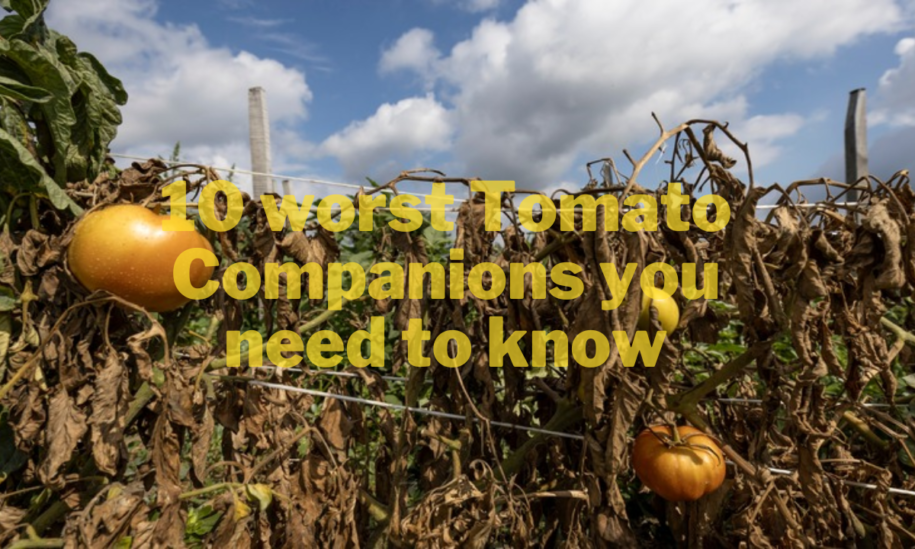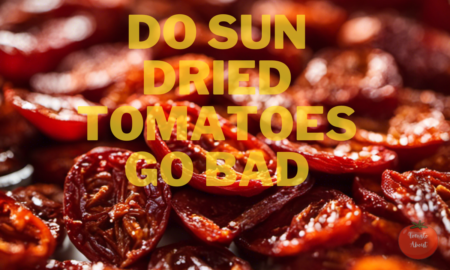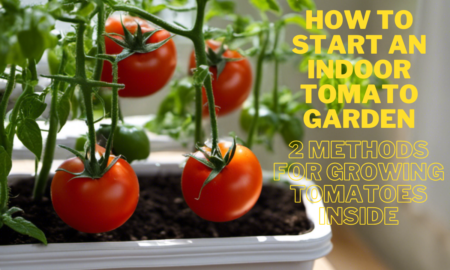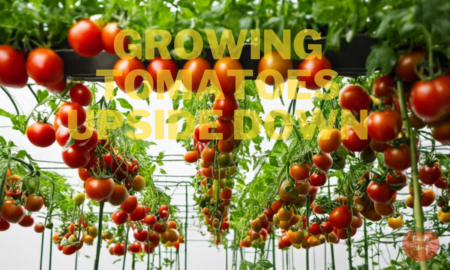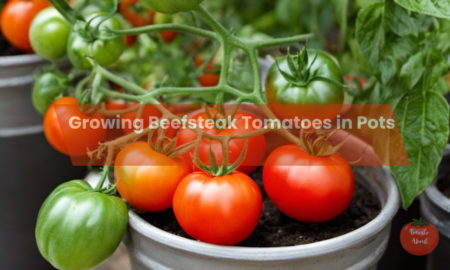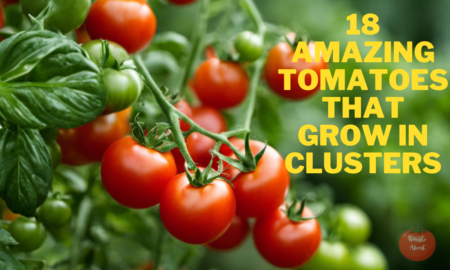Key Takeaways
- Avoid planting tomatoes near potatoes, as they share diseases and compete for nutrients, risking blight outbreaks.
- Fennel can hinder tomato fruit set and attract destructive hornworm caterpillars, so keep them apart.
- The cabbage family (broccoli, cauliflower, etc.) can bring pests and diseases that quickly spread to your tomato plants.
- Tomatoes and peppers compete for resources and can spread diseases, so separate them by at least 10-15 feet.
- Eggplants may repel some pests but attract others that can harm both eggplants and tomatoes; keep them 20 feet apart.
Picture it – rows of lush tomato plants heavy with ripe red fruit. Juicy cherry tomatoes popping with sweetness, beefsteaks begging to be sliced for sandwiches, romas ready for sauce. Summer tomato bliss!
Now imagine leaves spotted with fungus. Chewed-up stalks covered in caterpillars. Wilted plants with green fruit stubbornly clinging to bare branches.
This nightmare scenario happens more often than you’d think thanks to one factor – bad neighbor plants. While some vegetables thrive alongside tomatoes, others are forbidden fruit that can ruin your tomato dreams.
Take it from me, a veteran gardener who learned the hard way which plants spell trouble for tomatoes. After seasons of pitiful plants and pathetic harvests, I uncovered the top 10 companions you should banish from your tomato patch.
Ready to grow tomato success? Here are the 10 worst tomato companions and why they just don’t jive:
1. Potatoes – The Blight Bringers
Tomatoes and potatoes seem like a perfect pair, right? Unfortunately, these two culinary classics clash when grown side by side.
Why? Because potatoes and tomatoes hail from the same plant family. And family breeds contempt between these crops.
Cousins by ancestry, compete for nutrients in the garden. More concerning is their tendency to share diseases. Potatoes are infamous blight magnets. Early and late blight funguses fester on their leaves before spreading like wildfire to tomato plants.
I’ll never forget the summer blight took down all my tomatoes and potatoes. Practically overnight, blackened vines and rotting fruits. Total loss! Now potatoes are forever banished from my tomato patches.
Tip: Plant potatoes and tomatoes at least 20-30 feet apart on opposite sides of your garden. This reduces the risk of blights spreading between the two crops.
2. Fennel – The Trojan Horse
“Beware of Greeks bearing gifts” is apt wisdom for tomatoes and fennel. This licorice-flavored herb seems like a harmless neighbor at first. But behind that innocent facade, it springs two dirty tricks on your tomatoes.
First, chemicals emitted by fennel hinder fruit set – the crucial stage where ovaries develop into tomatoes. Research shows tomato plants grown near fennel produce significantly lower yields.
Fennel also attracts destructive hornworm caterpillars. These massive green worms can quickly defoliate tomato plants, leaving a mess of chewed-up leaves and bare stems.
Give fennel plenty of space to avoid stunting tomato production. Tomatoes and fennel do not make merry companions.
Tip: Grow fennel at least 10 feet away from tomatoes. This prevents the plants from competing for resources while also deterring wandering hornworms.
Warning: Check tomato plants daily for signs of hornworm damage. Look for dark green caterpillars up to 5 inches long with white stripes. Remove any found by handpicking.
3. Cabbage Kin (Broccoli, Cauliflower, and Crew) – Pest Magnets
Can you imagine a more iconic combo than tomatoes and broccoli? Two veggie superstars! However, their stardom fades when grown together.
The entire cabbage family, also called brassicas, attracts a motley crew of pests and diseases. Cabbage loops and worms chew through leaves. Clubroot fungus attacks roots. Alternaria spreads leaf spot infections.
These problems quickly spread from brassicas to any tomato plants growing nearby. The more cabbage kin, the bigger the risks to tomatoes.
In the past, my tomato plants suffered mightily when surrounded by brassicas. Now I give broccoli and company a wide berth to avoid sharing bugs and diseases.
Tip: Separate brassicas and tomatoes by at least 3-4 feet to limit pest and disease transmission.
Product Recommendation: Use floating row covers over brassicas and tomato plants to create a protective barrier against pests like cabbage worms. Drape the fabric directly over plants and secure the edges with stones, boards, or landscape pins.
4. Peppers – Risky Business
Peppers and tomatoes are both all-star crops. But all-stars have big egos, and these two nightshade relatives let their pride get in the way.
Grown together, tomatoes and peppers compete for water, light, and soil nutrients. Both require nourishment in equal supply, so neither thrives. Their yields are lower and harvests later.
Diseases also run rampant between pepper and tomato plants. Viruses like tobacco mosaic and spotted wilt spread easily through contact.
For top production keep these primadonnas separated. Counterintuitive, I know, but trust me – tomatoes and peppers need their space.
Tip: Maximize yields by planting peppers and tomatoes at least 10-15 feet apart in an alternating pattern.
Fact: One study found tomatoes and peppers grown together produced 20% lower yields compared to plants grown separately.
5. Eggplants – Pests Unlimited
Eggplants and tomatoes seem compatible since eggplants repel some notorious tomato pests like nematodes and aphids. So what’s the issue?
The problem is that eggplants are a magnet for other destructive insects including flea beetles, Colorado potato bugs, and the dreaded hornworm.
These chewing pests flock to eggplant foliage first but soon spread to tomato plants. Eggplants also harbor diseases like verticillium wilt that thrive on tomatoes.
In my experience, hornworm damage gets exponentially worse when tomatoes grow near eggplants. Keep your plants 20 feet apart to limit the bug buffet.
Tip: Use reflective mulches like aluminum foil around eggplants and tomatoes. The flashing light deters pests like flea beetles and hornworms.
Warning: Inspect plants daily for pests and diseases. Catch problems early before they spread.
6. Strawberries – Fungal Foes
On the surface, strawberries make fine tomato friends. Different families, different needs, different habits. Live and let live, right?
Wrong! Though strawberries are their own berries, they still spell trouble for tomato plants in one big way – verticillium wilt. This nasty fungal disease cuts off water flow, causing leaves to curl and wilt before the whole plant withers away.
Verticillium thrives on both tomatoes and strawberries. Once it infects one plant, it easily spreads to the other. The only remedy is immediate removal of infected plants to prevent further contamination.
I learned this lesson the hard way – now my strawberry patches are strictly segregated from tomatoes! No friendly fraternizing allowed.
Tip: Rotate tomato and strawberry plantings yearly to prevent verticillium buildup. Avoid planting either crop in the same soil more than once every 3-4 years.
Product Recommendation: Drench the soil with Actinovate lawn & garden fungus control at planting time. The beneficial microbes attack soil-borne fungi before they infect plants.
7. Walnut Trees – Toxic Drops
Overhead shade from a mature walnut tree seems like an ideal spot for a tomato patch. But beware! Those broad branches don’t offer protective shelter – they rain toxic death.
Walnut trees emit a chemical called juglone in all parts of the plant, from leaves to roots. This substance leaches into the soil, poisoning many vegetable crops.
Tomatoes grown near walnut trees experience stunted growth, yellowed leaves, wilting, and low fruit production. Juglone robs the soil of essential nutrients plants need.
Research shows tomatoes are moderately sensitive to juglone. For best growth, situate tomato beds at least 60 feet from the outer canopy of any walnut trees.
Tip: Add extra compost and fertilizer to tomato plants grown near walnut trees. This helps counteract juglone’s nutrient-stripping effects.
Fact: Juglone accumulation under black walnut trees can reach levels toxic to tomatoes for up to 60 years. Don’t plant tomatoes anywhere a walnut tree recently stood.
8. Basil – Pushy Companion
No need to adjust your screens – you read that right. Basil, the king of herbs for tomatoes, actually makes a poor garden companion for tomato plants. Say it ain’t so!
While tomatoes and basil are a match made in culinary heaven, as live plants they compete. Basil demands its fair share of nitrogen, water, and real estate. It often edges out emerging tomato seedlings.
Studies found 50% lower tomato yields when basil shared the same raised beds. For best growth, keep basil in a container nearby and harvest as needed.
Tip: Grow bush basil varieties like ‘Spicy Globe’ in pots near tomatoes. The compact size prevents crowding and avoids competition.
Product Recommendation: Pot up sweet basil, lemon basil, or other varieties in a patio container. Place it within easy picking distance of your tomato plants.
9. Lettuce & Spinach – Pest Portals
At first glance, lettuce and spinach make ideal neighbors for tomato plants. Shallow roots, different nutrient needs – they should mind their own business, right?
Wrong! These greens lay down a welcome mat for destructive spider mites. Tiny spider mites thrive on lettuce and spinach and then migrate to tomato plants for seconds. Their microscopic bites damage leaves and stunt fruit growth.
I once battled epic spider mite infestations after planting lettuce and spinach as companion crops. Never again! Now I keep them far from my tomatoes.
Tip: Separate lettuce/spinach plantings from tomatoes by at least 10-15 feet. Greater distance helps deter wandering spider mites.
Product Recommendation: Use an organic miticide like Dr. Earth Final Stop Yard & Garden Insect Killer to control spider mite infestations before they get out of hand.
10. Corn – Greedy Grower
Like lettuce and spinach, corn seems an amiable neighbor for tomato plants. As a tall crop, it provides useful shade sans the walnut toxicity.
However, corn’s extensive root system makes it a greedy garden mate. Corn rapidly develops massive root networks that infiltrate and overwhelm neighboring plants.
The vigorous roots rob tomatoes of water and nutrients needed for good growth. Your tomato plants will likely underperform when competing with corn’s underground monopoly.
For best results, keep corn separated from your tomatoes across the garden or planted on alternate years. Silking corn ears deserve their own space.
Tip: Space corn and tomato plantings at least 8-10 feet apart to minimize root competition. Orient corn on the north side of tomatoes so it doesn’t block needed sunlight.
Fact: Corn roots can spread 3-4 feet deep and up to 6 feet wide. They will easily overtake tomato roots in shared garden space.
Wrapping up
Now you know which plants spell trouble for tomatoes! Keep these forbidden fruits far from your prized tomato patch.
Use smart companion plants like marigolds, parsley, carrots, and onions instead to help repel pests and improve flavor. With the right plant pairings, you’ll be harvesting bushels of sweet, juicy tomatoes in no time.
The forbidden fruit may taste tempting, but resist their siren song in the garden. Separate tomatoes from these mismatched companions and success will soon bear fruit.

